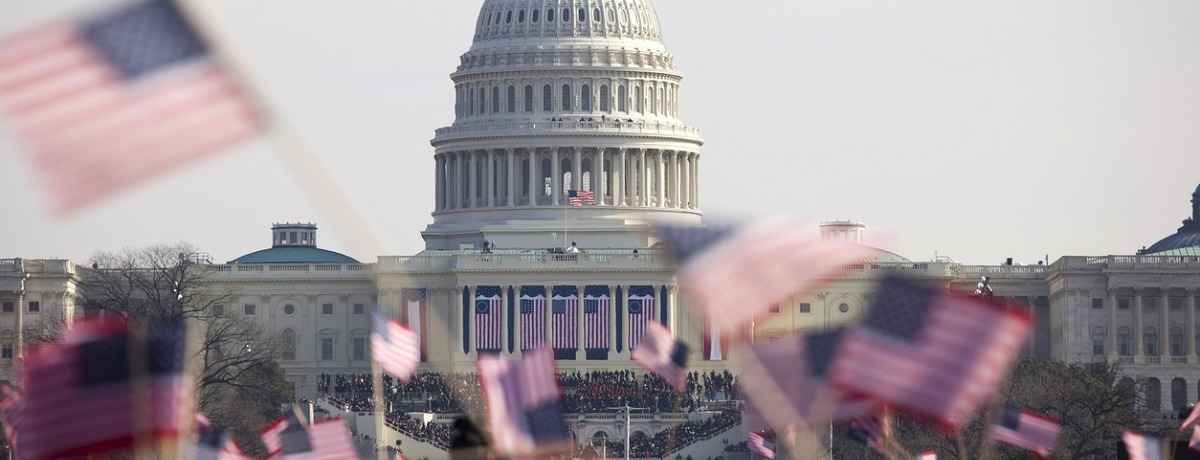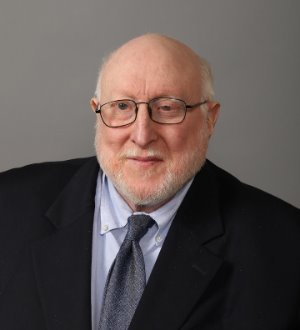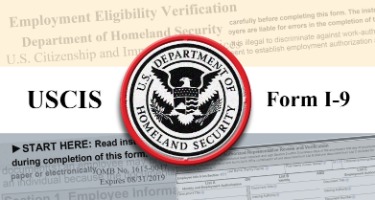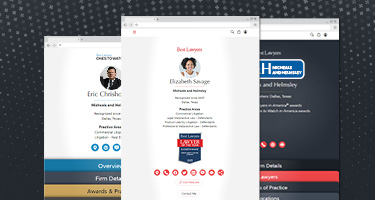One year ago, few people outside of candidate Donald Trump and his closest and most loyal supporters imagined that January 20, 2017, would mark his inauguration as the 45th president of the United States. Regardless, today an estimated 800,000–900,000 people were on hand to witness his inauguration on the west front steps of the U.S. Capitol. As is the tradition, the new president was sworn in by the chief justice of the Supreme Court of the United States, with Donald Trump repeating the 37-word, constitutionally mandated oath of office administered by Chief Justice John G. Roberts Jr. There then followed the traditional rendition of “Ruffles and Flourishes” and the first “Hail to the Chief” for President Trump, as well as the howitzers of the 3rd U.S. Infantry's 21-round gun salute while the First Lady and other members of the Trump family looked on.
Meanwhile, some remained dissatisfied with the election results—in which Trump won a wide majority of votes cast in the Electoral College (301–237) but lost the popular vote by over three million votes. Those perspectives were reflected by thousands of demonstrators in inauguration marches in Washington, D.C. and elsewhere around the country.
Despite the protests, on January 20, Donald John Trump became the new president of the United States, along with Vice President Mike Pence, and the Trump era was launched.
His relatively brief inaugural address—20 minutes—written by his own hand, lacked the rhetorical flourishes of the most memorable lines from several of his predecessors.
For a president with a national popularity rating of 40 percent, according to a recent poll—the lowest rating of any new president on Inauguration Day over the past six most recent presidents—President Trump's call for national unity was an important message to deliver, especially in the face of impending change.
In this regard, President Trump used expressions in his inaugural speech such as “always pursue solidarity” and “We share one heart, one home, and one glorious destiny.” Yet essentially, it was a speech that mirrored his campaign speeches calling to "Make America great again." Perhaps the most memorable line was,
From this day forward, a new vision will govern our land. From this day forward, it's going to be only America first, America first.
The Trump White House
President Donald Trump and Vice President Mike Pence plan to advance a conservative domestic social and fiscal policy agenda from the White House, and to redefine global relationships with our trading partners, foreign governments, and international organizations. President Trump has promised to quickly overturn President Obama’s executive orders and regulations, as well as repeal and replace the Affordable Care Act, which was passed by a strictly partisan congressional vote with no Republicans voting in favor. President Trump also enjoys a Senate Republican majority to confirm his Cabinet nominees, although confirmation of some may face difficulty. However, Senate confirmation of his choice for the Supreme Court of the United States will be more difficult since, unlike lower federal circuit court judges and administration appointments that cannot be filibustered and only require a simple 51-vote majority to confirm, Supreme Court nominees require 60 votes to overcome a threatened Senate filibuster.
The Republican Congress—Critical to Trump's Agenda
The Trump era will rely on a Republican-controlled Congress to advance its agenda. Republicans enjoy majorities in both Houses of Congress, albeit by slimmer margins than the 114th Congress. In the new 115th Congress (2017-2018), Senate Republicans hold 52 seats versus 46 Democrats and 2 Independents who caucus with the Democrats, which is 2 fewer Republicans than in the 114th Congress. The slim 52-vote majority makes Senate Republicans susceptible to a 60-vote super-majority vote necessary to invoke cloture to end a legislative filibuster blocking the Trump agenda. In the House the margin is 241 Republicans versus 194 Democrats, which includes 6 fewer Republicans than there were in the 114th Congress but more than sufficient to move the Trump agenda.
What is the Trump Agenda?
President Trump's Inaugural Address echoed themes he had sounded over the course of his candidacy. Key excerpts from his speech reflect his priorities:
- “We assembled here today are issuing a new decree to be heard in every city, in every foreign capital, and in every hall of power. From this day forward, a new vision will govern our land. From this day forward, it's going to be only America first. America first.”
- “What truly matters is not which party controls our government but whether our government is controlled by the people.”
- “January 20th, 2017 will be remembered as the day the people became rulers of this nation again.”
- “When you open your heart to patriotism, there is no room for prejudice.”
- “A new national pride will stir our souls, lift our sights and heal our divisions.”
First 100 Days
On the first day, the Senate—as expected—confirmed two of President Trump's Cabinet nominees: retired United States Marine Corps general, James "Mad Dog" Mattis as Secretary of Defense and retired Marine General John Kelly as Secretary of Homeland Security.
Although President Trump will take executive actions on Inauguration Day following his swearing in, he has stated that he considers his "first day" to be Monday, January 23.
President Trump's first 100 days in office are likely to include a laser-beam focus on:
- confirming his Cabinet and sub-Cabinet nominees;
- repealing the Affordable Care Act (or “Obamacare”) and replacing it with a slimmed-down version;
- overturning most, if not all, of President Obama's executive orders and instructing the Trump Executive Branch agency heads to undo Obama regulations by reverse rulemaking or by withdrawing their agencies' legal defenses of such regulations before the federal appellate courts where they have been enjoined permanently (e.g., the persuader rule) or preliminarily (e.g., the government contractor "blacklisting" rule);
- redesignating the chairs of the National Labor Relations Board (NLRB) and the U.S. Equal Employment Opportunity Commission (EEOC), and filling vacancies in those two agencies;
- nominating a new Supreme Court justice and candidates for the lower federal circuit courts of appeals;
- beginning work on immigration policy, infrastructure, tax reform, and trade policy; and
- negotiating a spending bill to fund the federal government before the continuing resolution expires in April 2017.
How Might Labor and Employment Policy Change Under President Trump?
Under President Trump, expect a significant reversal of Obama labor and employment policies at the U.S. Department of Labor (DOL), NLRB, and the EEOC.
Traditional Labor. In terms of labor policy, for example, a recent study concluded that over 4,559 years of judicial precedent was overturned in eight years by the Obama Board in favor of pro-union policies. Expect gradual reversal of many of those decisions by a new Trump Board. Reversals will be slowed, however, by the need for a "live" case (the NLRB is not permitted to issue advisory opinions) and by incumbent pro-union Democratic General Counsel Richard Griffin, whose term expires in November of 2017.
Joint-Employer. Also, expect reversal of the Obama policy on "joint-employer" status, which saddles franchisors with the collective bargaining obligations and labor law violations of their franchisees. The ubiquitous Obama joint-employer standard has been developing government-wide by the NLRB (in its Browning-Ferris Industries decision) as well as by the DOL's Wage and Hour Division and Occupational Safety and Health Administration, and by the EEOC. Business groups argue that the joint-employer standard would destroy the franchise model. We can likely expect the Trump administration to move quickly to reverse these joint-employer policies, especially if the chief executive officer of CKE Restaurants, Andy Puzder is confirmed as Secretary of Labor.
Wage and Hour Issues. On issues such as the "salary basis" for the Fair Labor Standards Act's overtime exemption for white collar employees (executive, administrative, or professional employees), and the minimum wage, expect the Trump administration to propose significantly lower increases than those proposed by President Obama. Similarly, expect Trump to advance some version of a federal paid family leave law, although without some of the provisions previously advocated.
Executive Orders. On issues like "government contractor blacklisting" (Executive Order 13673, "Fair Pay and Safe Workplaces" and its implementing regulations and DOL guidance), President Trump has promised to quickly rescind the executive order, perhaps on his first day in office. The same is true with Obama's other labor and employment executive orders starting with those from the first days of the Obama presidency.
Persuader Rule. As for the "persuader" regulations, expect Trump to instruct his Justice Department and Department of Labor to withdraw their appeals in the Fifth Circuit of the permanent injunction granted by a federal district court in Texas. The same is true of the appeal of a preliminary injunction of the Labor Department's overtime regulation entered by another federal district court in Texas. By withdrawing from the litigation, the Trump administration would effectively end those regulations without going through a burdensome and time-consuming reverse rule making.
Immigration. In addition to reversing and replacing Obamacare and rescinding other Obama labor and employment executive orders and regulations, immigration reform is a high priority for the Trump administration. Under President Trump, immigration policy will focus on boarder security, restrictions on entry, and deportation of undocumented aliens.
Court Vacancies. Finally, the composition of federal courts, including the Supreme Court of the United States, is important to labor and employment policy. Filling the vacancy on the Supreme Court, and the 100 vacancies in the lower federal courts, will be a priority. Currently, for example, only the Fifth, Sixth, Seventh, and Eighth Circuits retain majorities appointed by Republican presidents. Now, after the "nuclear option" was rammed through the Senate by then-Majority Leader Harry Reid (D-NV), it is possible that the Senate confirmation of judicial appointments will not be filibustered and will only require a simple 51-vote majority. We can likely expect President Trump to move quickly to fill those vacancies.
Post-Inauguration Day 2017: The Trump Era Begins
The next four years potentially will bring dramatic changes in domestic and foreign policy. One of the most significant changes likely will be in labor and employment policy. As with all of his predecessors throughout U.S. history, President Trump enters the White House hoping to bring about change. Time will tell.
























